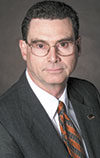Most printed gestation tables predict that calving will take place 283 days (some 285 days) after artificial insemination or natural breeding. Cows and heifers that gestate in hot weather will often calve a few days earlier than expected.
Oklahoma State University physiologists studied early fall (August) and late fall (October) calving cows. Data from two successive years were combined for 60 Angus X Hereford crossbred cows. The "early" and "late" fall-calving cows had been artificially inseminated in early November or early January, respectively. Semen from the same sire was used for all cows. All cows were exposed to a single cleanup bull for 35 days at four days after the A.I. season.
The weather prior to calving was significantly different for late pregnancy in the two groups. The average maximum temperature the week before calving was 93ºF for the early fall group. The average maximum temperature the week before parturition in the late calving group was 66ºF. There was a 100 percent survival rate for calves in both groups, and both groups of cows had very high re-breeding rates (90 percent and 92 percent, respectively).
The average gestation length for the early cows was six days shorter (279 days) as compared to the late cows (285 days) in year one. The average gestation length for the early cows was four days shorter (278 days) as compared to the late cows (282 days) in year two.
Keep in mind that the gestation lengths listed are average. This means that about half of the cows calved earlier than that. Producers with early fall-calving cows should expect calves to start coming several days ahead of the "textbook gestation table" dates. They should begin their routine heifer and cow checks at least a week to 10 days ahead of the expected first calving date.
See the 2004 Oklahoma State University Animal Science Research Report for more information.
Glenn Selk is emeritus extension animal scientist at Oklahoma State University. This originally appeared in the Cow/Calf Newsletter.









